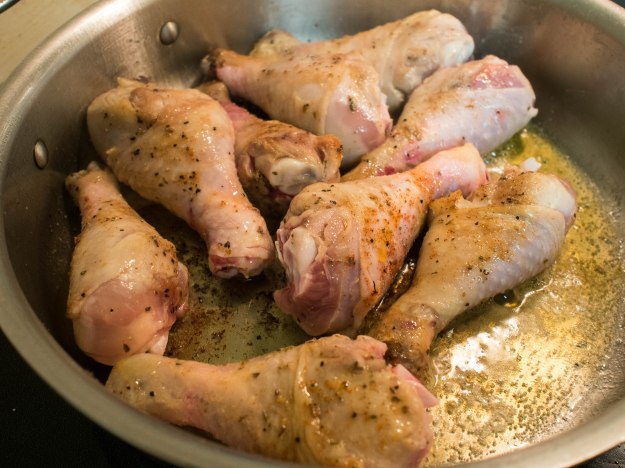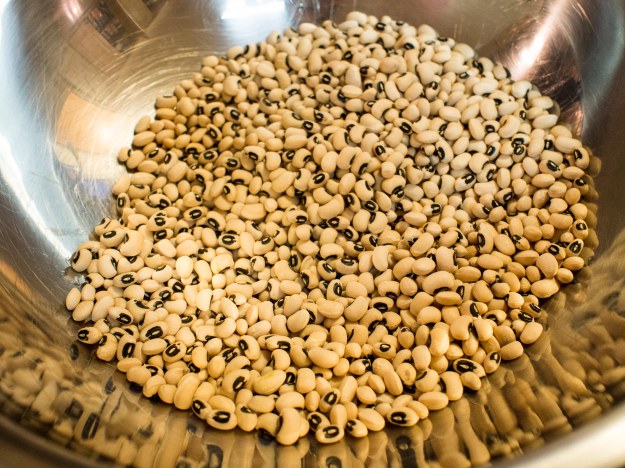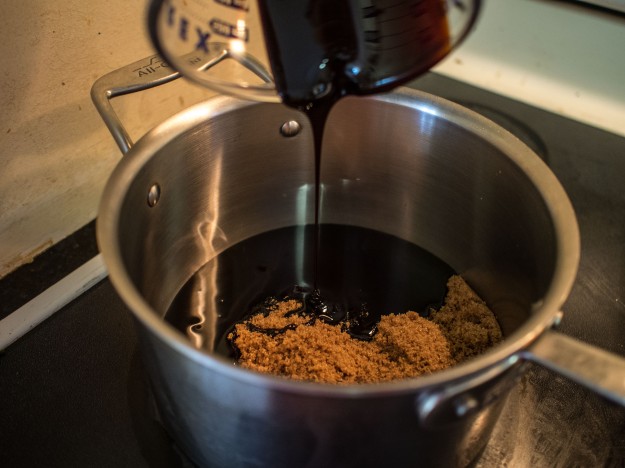
Yes, you can make stuffing with no bread and have it look this awesome!
Sponsored Post
There are few holidays that really excite me food-wise as Thanksgiving. First of all, you have the tradition. You can go full bore and serve exactly what the pilgrims ate, or you can do the modern classical Thanksgiving: Turkey, stuffing, various potatoes, token green veg, rolls and pumpkin pie. It’s a virtual carbohydrate bonanza! Over the years, however, various dietary needs have arisen and several beloved family members have been diagnosed with diabetes. The traditional Thanksgiving meal is a disaster for your typical diabetic. Instead of “going without”, I am all about making something equally good from more low carb friendly fare.
My most favorite dish on the Thanksgiving table is stuffing. As a kid, there was nothing better than the box of Stove Top Stuffing, amended with sausage and mushrooms and placed on the table. Nothing. Sure, I can laugh now, but back then, you angled to get a seat by the stuffing. Stuffing by its very nature, however, is a high carb endeavor.
So, I started looking at all the stuffings from the yesteryear for inspiration. Stuffings with sage or chestnuts or oysters! Oh my! So much to try. So I stumbled upon the recipe below quite by accident. I wanted a touch of richness, a bit of history, and a whole bunch of easy. One of my go to ingredients when I’m looking for rich and clearly special is Prosciutto di Parma. It gives a fantastic, complex, flavor without the excess, and rather random amount of fat and smoke that bacon brings.
Initially, I came up with a stuffing with sausage, chicken livers, oysters, prosciutto di parma, seasonings and bread crumbs. There wasn’t a single drop of stuffing left. Everyone ate every last bit and wanted more. However, the carb count was likely crazy high. So, I had to turn my focus to the low carb version. Then, I got an assignment that asked me to concentrate on gluten free cooking that included the amazing Prosciutto di Parma, or parma ham. Could I adapt the my high carb, gluten riddled recipe recipe? Would it work? These questions kept me up at night.
First, my philosophy for low carb is not to make a thin imitation. While you’ll never convince me that pureed cauliflower is mashed potatoes, the dish is really quite good in its own right. And, more importantly, I don’t miss the potatoes. My goal for this dish was: good and you don’t miss the original. How can you go wrong with Prosciutto di Parma, sausage and oysters. Right?
Let me caution: this stuffing is full bodied and full fat. It’s a go big or go home type stuffing. Everyone who has tried this stuffing in either high carb or low carb form have raved about it. Some people have declined to try it due to the ingredients. Chicken livers and oysters can lead some to take a pass. More for me, honestly.
The technique I use is really rather unique. I was making the stuffing and decided to take a short cut. I didn’t want whole oysters or pieces of chicken livers in my stuffing for texture reasons, so I figured I would just chop them for a bit in the processor, because, well, isn’t that what it’s for? I quickly learned there’s no level of “a bit” that doesn’t turn the livers or oysters into liquid. So, instead of minced shellfish or livers, I had a lovely red puree. However, I wasn’t wasting my money by not using the livers or oysters, so I included them in the stuffing. Because these overtly odd ingredients didn’t appear in the stuffing, people were more inclined to try it. And, by extension, love it! Huzzah! I just got back from Williamsburg, so that celebratory phrase stays!
So, dear reader, I am giving you my famous stuffing recipe. My kids cried that I was using a recipe from the secret family recipe book. But I will share this one. Kick the boxed stuffing habit and make your own stuffing. It will be miles better than anything from a box. You can make it ahead too! And, depending on the version below you choose, you can actually label this a vegetable side. You’ll get the joke when you read the ingredients.
Sausage and Oyster Stuffing
Serves: Thanksgiving Crowd (10 or so, easily doubled if you need more)
Prep Time: 15-25 minutes, depending on version made
Cook Time: 30-40 minutes
Note: Low carb/Gluten free version requires cooked cauliflower, see Cuban Rice and Beans for full prep instructions.
5 chicken livers
6 oysters, shucked
1/3 cup bacon drippings, lard or other high temperature suitable oil
1/2 pound Prosciutto (parma ham), medium dice
1 pound sage sausage
2 cups finely chopped onion
1 cup finely chopped celery
1 cup sliced mushrooms
2 cloves of garlic, minced
1 teaspoon sage, rubbed
4 tablespoons unsalted butter
Low Carb/Gluten Free Version:
1 large head of cauliflower, cut into florets, roasted at 375 degrees for about 15 minutes until soft and slightly brown, chopped fine
“Regular Version”:
4 cups bread crumbs (gluten free, if needed)
2 hard boiled eggs, coarsely chopped
Salt and Pepper to taste
Place chicken livers and oysters in the container of the food processor and process thoroughly. Cover and set aside in the refrigerator.
Heat fat over medium heat in a large skillet. And prosciutto and sausage and cook until the sausage is cooked through and both are rendered of fat. Add the onions, celery and mushrooms and cook until the onions and celery are translucent and the mushrooms have lost some of their liquid. Add the garlic and saute until soft. Add the sage and liver mixture. Cook until the mixture is no longer reddish. Add the butter, cauliflower or bread crumbs, eggs and salt and pepper. Place in an oven dish, cover and refrigerate. To serve, heat in a 350 degree oven until the top is brown and the stuffing is warmed through.
Follow Parma Ham on Twitter for a chance to win $50 worth of the world’s most famous ham. Click on the banner below to participate. This post is a collaboration between the blogger and Parma Ham.
































